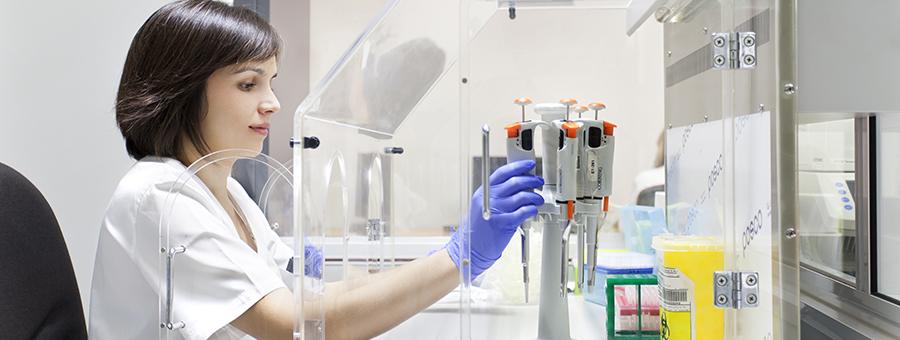At Eurofins LGS Megalab, we carry out different techniques based on these essentials. After the extraction of genetic material, the mixture of different reactives is carried out and they are put into the leading-edge equipment, which is ready to carry out the techniques we are speaking of. Currently, the genotyping of the Human Papilloma Virus is carried out together with the detection of sexually transmitted pathogens by real time PCR and melting; and the viral loads of the Hepatitis C Vir, Human Immunodeficiency Virus, detection of Mycobacterium tuberculosis complex, and detection and genotyping of Factors II and V of coagulation by means of real-time PCR in a piece of automatic equipment.

Genetics
The must usual applications are:
- Reproduction: Non-invasive prenatal diagnosis
- Tests of paternity, maternity, relationship, genetic fingerprint
- Cytogenetics and molecular genetics
Molecular biology
This is closely linked to other disciplines like Genetics (genetic studies); Biochemistry (studies of the enzymes and proteins); Microbiology (identification of microorganisms and relevant features); Haematology; Immunology, etc, etc.
The techniques of molecular biology applied to the laboratory have increased our ability to understand, diagnose and treat a great range of illnesses.
Most-used methods
The most usual are:
Detection by means of melting temperature):
Detection and quantification by means of PCR in real time:
A variant of this technique is to carry out the quantification of RNA (HIV virus, VHC viruses which are RNA viruses). In order to carry out the quantification first a step from RNA to DNA is carried out via an enzyme called inverse transcriptase. Subsequently, the rest of the process is the same.



